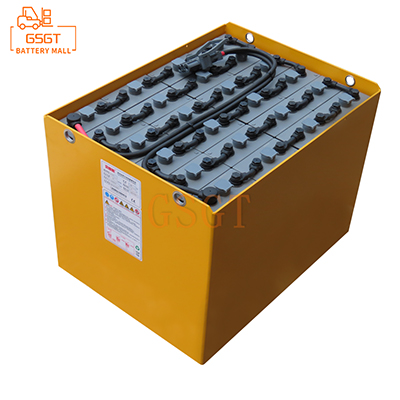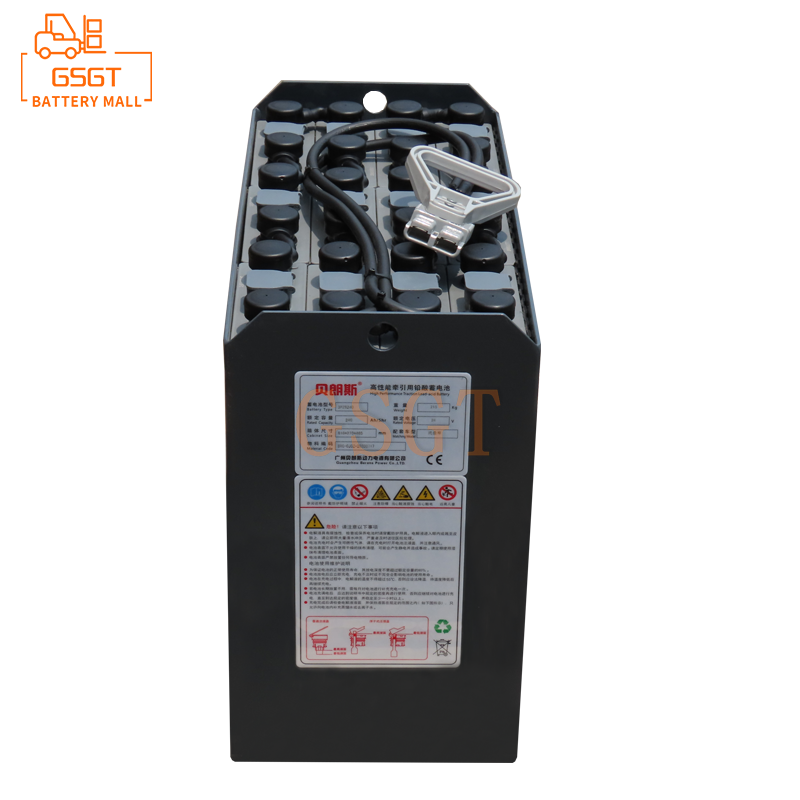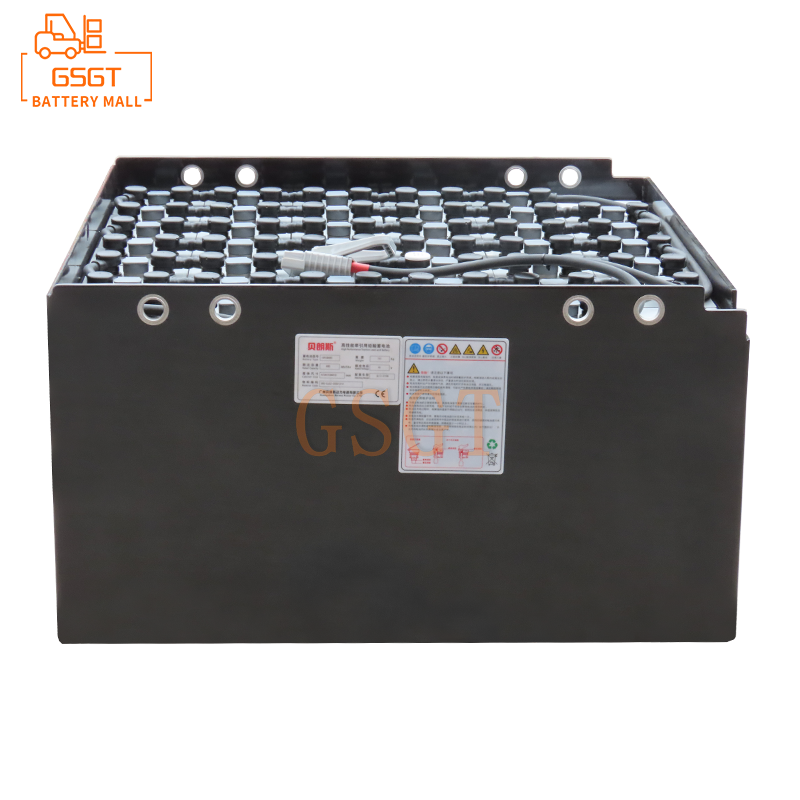Time:2025-05-27 10:49:05
Browse:602
Introduction
In the field of modern logistics and industrial production, forklifts, as key material handling equipment, the selection of their power sources is of vital importance. Lead-acid batteries, as the traditional and widely used power source for forklifts, exhibit unique characteristics in terms of performance, cost, maintenance and other aspects. A thorough analysis of the cost-effectiveness of lead-acid batteries for forklifts holds crucial guiding significance for enterprises in making decisions on forklift power configuration, and helps them achieve a balance between efficient production and cost optimization.
The performance of lead-acid batteries
Stable power output
Lead-acid batteries, with their mature technical system, can provide stable voltage and current during forklift operations. Whether it is a forklift climbing a slope fully loaded with goods or frequently starting and stopping in warehouse handling scenarios, lead-acid batteries can ensure the smooth operation of the forklift's power system. For instance, in large logistics warehouses, forklifts need to handle a large amount of goods during loading, unloading and transportation every day. Lead-acid batteries can ensure that the power output of forklifts remains stable during long-term operation, avoiding the impact on work efficiency due to power fluctuations and guaranteeing the smooth progress of logistics operations.
Adapt to various working conditions and environments
Lead-acid batteries have a strong adaptability to the working environment. Under normal temperature conditions, its performance is stable and reliable. Even in a certain degree of high and low temperature environment, such as a cold storage environment or a high-temperature workshop in summer, with appropriate protection and maintenance, it can still maintain basic working performance. In some food cold chain logistics warehouses, the temperature is usually maintained at a relatively low level. Lead-acid batteries, by being equipped with insulation measures, can continuously provide power for forklifts, meeting the demands of cold chain goods handling. This wide adaptability to working conditions enables lead-acid batteries to play a role in various industrial scenarios.
Sufficient battery life
Although the energy density of lead-acid batteries is relatively lower than that of some new types of batteries, their large-capacity design can meet the range requirements of forklifts in regular working scenarios. For the daily working hours and handling intensity of most forklifts, a lead-acid battery can support the forklift to work continuously for several hours after being fully charged once, completing a large number of material handling tasks. In a typical small factory workshop, forklifts work for 6 to 8 hours a day. The endurance of lead-acid batteries can fully meet this working intensity, eliminating the need for frequent charging and ensuring the continuity of production operations.
Cost analysis of lead-acid batteries
Lower initial purchase cost
Compared with other types of forklift batteries such as lithium batteries, lead-acid batteries have a significant advantage in terms of purchase price. Under normal circumstances, the initial purchase cost of lead-acid batteries is only half or even lower than that of lithium batteries. For many small and medium-sized enterprises, capital cost is an important consideration factor when purchasing equipment. Under limited budgets, the relatively low purchase price of lead-acid batteries enables enterprises to configure forklift equipment at a lower cost, reducing the initial investment pressure on enterprises and making the selection of forklift power more economically feasible for them.
Reasonable usage cost
Although the charging and discharging efficiency of lead-acid batteries is relatively low, which may cause their energy consumption cost during use to be slightly higher than that of some high-efficiency batteries, considering the advantage of their initial purchase cost comprehensively, lead-acid batteries still have competitiveness in terms of overall usage cost. In some industries where forklifts are used frequently but are relatively less sensitive to energy consumption costs, such as the building materials handling industry, the usage cost of lead-acid batteries is within an acceptable range. Moreover, by rationally planning the forklift operation process and optimizing charging management and other measures, its energy consumption cost can be further reduced and the overall usage efficiency can be improved.
Considerable recycling value
Lead-acid batteries contain recyclable substances such as lead and sulfuric acid. When batteries reach the end of their service life, they can be handed over to professional recycling institutions for processing. Recycled lead can be used in the production of new batteries or the manufacturing of other lead products, achieving the recycling of resources. This not only reduces the pollution of waste to the environment, but also brings certain economic benefits to enterprises and lowers the full life cycle cost of batteries. According to statistics, recycling lead from lead-acid batteries can enable enterprises to obtain a certain degree of compensation in battery costs, further enhancing the cost performance of lead-acid batteries.
Key points for maintaining lead-acid batteries
Regular inspection and maintenance
Lead-acid batteries need to have their electrolyte levels and densities checked regularly. It is generally recommended to conduct a check at least once a month. If the liquid level is found to be too low, distilled water or special lead-acid battery replenishment solution should be added in time to ensure the normal progress of the chemical reactions inside the battery. At the same time, regularly inspect the connection parts of the battery to ensure a firm connection without any loosening or corrosion, to prevent battery performance degradation or malfunction due to poor contact. In places where forklifts are frequently used, such as large logistics hubs, dedicated personnel should be assigned to be responsible for the regular inspection and maintenance of lead-acid batteries to ensure their stable operation.
Correct charging management
It is crucial to use the appropriate charger and operate strictly in accordance with the battery charging specifications. Avoid overcharging and overdischarging. Overcharging can cause the battery to heat up, lose water and accelerate the aging of the plates. Excessive discharge will cause sulfation of the plates and shorten the battery life. Under normal circumstances, when the battery power remains at 20% to 30%, it should be charged in a timely manner. The charging time should not be too long, and charging should be stopped immediately after it is fully charged. During the intervals of forklift operation, reasonably arranging the charging time and ensuring that the battery is in good charging condition can help extend the battery's service life and reduce maintenance costs.
A good usage environment
Try to create a good usage environment for lead-acid batteries and avoid using them for long periods in high-temperature, humid or dusty conditions. High-temperature environments can accelerate the chemical reactions inside batteries, leading to water loss and accelerated aging of the plates. A humid environment is prone to cause corrosion of the battery casing and connection parts. A dusty environment may allow dust to enter the battery interior, affecting its performance. Where conditions permit, a dedicated area for forklift battery charging and storage can be set up to maintain a clean, dry and well-ventilated environment, providing a guarantee for the stable operation of lead-acid batteries.
A comparison of cost performance with other types of batteries
Compared with lithium batteries
Lithium batteries have the advantages of fast charging speed, high energy density and long service life. However, its initial purchase cost is extremely high, several times that of lead-acid batteries. In terms of maintenance, although lithium batteries do not require as frequent checks on the electrolyte and other components as lead-acid batteries, once a fault occurs, the repair cost is relatively high. For some enterprises with limited budgets, low forklift usage frequency and not strict requirements for charging time, the cost-performance advantage of lead-acid batteries is obvious.
Compared with nickel-metal-hydride batteries
Nickel-metal hydride batteries have a relatively high energy density and good low-temperature performance, but their cost is also relatively high, and they do not have a significant advantage over lead-acid batteries in terms of charge and discharge cycle life. The cost advantage of lead-acid batteries makes them more attractive in the competition with nickel-metal-hydride batteries for most enterprises that focus on cost control. Moreover, lead-acid batteries have a higher level of technological maturity and more complete market supporting services, thus having an advantage in the comprehensive consideration of cost performance.
Factors affecting the cost performance of lead-acid batteries
Brand and Quality
Lead-acid batteries of different brands vary in quality. Well-known brands usually employ higher-quality raw materials and more advanced production techniques, and their products perform better in terms of performance stability and service life. Although the price may be relatively high, in the long run, it can save more costs for enterprises and enhance the cost performance.
Usage frequency and working conditions
The usage frequency and working conditions of forklifts have a significant impact on the cost performance of lead-acid batteries. In environments with high usage frequency and complex working conditions, such as cargo handling in large ports, the battery wear rate increases, and batteries need to be replaced more frequently, which will increase the usage cost and reduce the cost performance. In places with lower usage frequency and simpler working conditions, such as small retail warehouses, the battery's service life is relatively long, which can better leverage its cost advantage and enhance the cost performance. Therefore, enterprises should rationally select the type and specification of batteries based on the actual usage of their forklifts to maximize cost performance.
Maintenance level
Professional and timely maintenance can significantly extend the service life of lead-acid batteries, reduce maintenance costs and enhance cost performance. If enterprises are equipped with professional battery maintenance personnel and strictly follow the maintenance norms for operation, they can effectively reduce the occurrence of battery failures and extend the battery replacement cycle. Conversely, if maintenance is improper, such as not checking the electrolyte for a long time or overcharging and discharging, it will accelerate battery damage, increase usage costs, and greatly reduce the cost-effectiveness of lead-acid batteries. Therefore, improving the maintenance level is an important way to enhance the cost performance of lead-acid batteries.
Conclusion
Considering multiple factors such as comprehensive performance, cost, maintenance, and comparison with other batteries, forklift lead-acid batteries have demonstrated a high cost-performance ratio in numerous application scenarios. Its stable power output, low initial purchase cost, considerable recycling value and relatively mature maintenance system make it the preferred choice for many enterprises when configuring forklift power. Although lead-acid batteries have certain limitations in some aspects, such as relatively low energy density and relatively complicated maintenance, through reasonable selection, correct use and maintenance, they can ensure the efficient operation of forklifts while effectively controlling costs for enterprises. In the future, with the continuous advancement of technology, the performance of lead-acid batteries is expected to further improve, and their cost-effectiveness will also be better optimized, continuing to play an important role in the field of forklift power.

$3405

$800

$5710

$5710

MESSAGE
Professional And Efficient
Security
Affordable Price
Professional Services